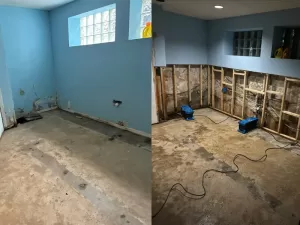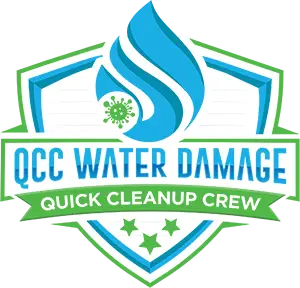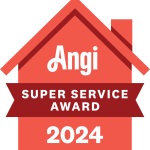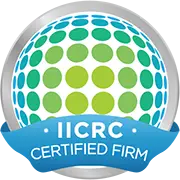 Mold growth in homes and commercial buildings is a serious concern in White Plains, NY, where the humid climate and seasonal weather patterns create an ideal environment for mold proliferation. Addressing mold damage promptly and correctly is essential to protect property value, maintain healthy indoor air quality, and prevent structural deterioration.
Mold growth in homes and commercial buildings is a serious concern in White Plains, NY, where the humid climate and seasonal weather patterns create an ideal environment for mold proliferation. Addressing mold damage promptly and correctly is essential to protect property value, maintain healthy indoor air quality, and prevent structural deterioration.
This comprehensive guide explores the causes of mold growth, the risks associated with mold damage, and the best practices for mold damage restoration specific to White Plains. Whether you’re a homeowner, property manager, or business owner, understanding the restoration process will help you take informed action when mold issues arise.
Understanding Mold Growth in White Plains
White Plains experiences a humid subtropical climate, characterized by warm, moist summers and cold winters. This climate contributes to moisture accumulation inside buildings, especially in basements, crawl spaces, bathrooms, and areas with poor ventilation. Mold spores, which are naturally present in the environment, thrive when moisture levels rise above 60% and temperatures range between 60°F and 80°F. The combination of these factors creates an ideal breeding ground for mold, making it essential for residents to be vigilant about moisture control in their homes.
Common causes of indoor mold growth in White Plains include water leaks from plumbing or roofs, flooding from heavy rains, condensation on windows and pipes, and inadequate ventilation. According to the Environmental Protection Agency (EPA), mold can begin to grow within 24 to 48 hours after water exposure, making rapid response critical. Homeowners should regularly inspect their properties for signs of water damage and mold growth, especially after heavy storms or plumbing issues. Preventative measures, such as using dehumidifiers and ensuring proper drainage around the foundation, can significantly reduce the risk of mold development.
Types of Mold Commonly Found
Several mold species are prevalent in White Plains homes and buildings. Stachybotrys chartarum, often called “black mold,” is notorious for its potential health risks. Other common molds include Cladosporium, Penicillium, and Aspergillus. While not all molds are toxic, any mold growth indoors should be addressed promptly to prevent health problems and property damage. Symptoms of mold exposure can range from mild allergic reactions, such as sneezing and skin irritation, to more severe respiratory issues, particularly in individuals with asthma or compromised immune systems.
In addition to the health implications, mold can also lead to significant structural damage if left untreated. It can weaken wood, drywall, and other materials, leading to costly repairs and renovations. Homeowners should be aware that mold can also emit an unpleasant musty odor, which can permeate the living space and affect indoor air quality. Regular cleaning and maintenance, along with professional mold inspections, can help mitigate these risks and ensure a safe, healthy living environment for all residents.
Health and Property Risks of Mold Damage
Mold exposure can cause a variety of health issues, especially for sensitive individuals such as children, the elderly, and those with respiratory conditions or weakened immune systems. Symptoms linked to mold exposure include nasal congestion, coughing, wheezing, eye irritation, and skin rashes. In severe cases, prolonged exposure to toxic molds like Stachybotrys can lead to chronic respiratory illnesses.
Beyond health concerns, mold can cause significant structural damage. It feeds on organic materials such as wood, drywall, and insulation, weakening the integrity of walls, floors, and ceilings. If left untreated, mold damage can lead to costly repairs and decreased property value.
The Economic Impact of Mold Damage
According to the Institute of Inspection, Cleaning and Restoration Certification (IICRC), mold damage restoration costs can range from a few hundred dollars for minor cases to tens of thousands for extensive contamination. In White Plains, where real estate values are high, mold damage can complicate property sales and insurance claims. Early detection and professional remediation help minimize financial losses.
The Mold Damage Restoration Process in White Plains
Effective mold damage restoration involves a systematic approach that includes assessment, containment, removal, cleaning, and prevention. Hiring certified mold remediation professionals familiar with White Plains’ unique climate and building codes ensures the job is done safely and thoroughly.
Step 1: Inspection and Assessment
The first step is a detailed inspection to identify the extent of mold growth and underlying moisture sources. Professionals use moisture meters, infrared cameras, and air quality testing to locate hidden mold behind walls or under flooring. This assessment guides the remediation plan and helps prioritize repairs.
Step 2: Containment and Air Filtration
To prevent mold spores from spreading to unaffected areas during cleanup, containment barriers such as plastic sheeting and negative air pressure machines are installed. High-efficiency particulate air (HEPA) filters capture airborne spores, protecting both occupants and workers.
Step 3: Mold Removal and Cleaning
Depending on the severity, mold removal may involve discarding contaminated materials like drywall, insulation, and carpeting. Non-porous surfaces are cleaned with specialized antimicrobial solutions. It’s critical that the removal process follows industry standards to avoid cross-contamination and ensure complete eradication.
Step 4: Drying and Moisture Control
After mold removal, affected areas must be thoroughly dried using industrial dehumidifiers and air movers. Addressing the moisture source—whether a plumbing leak, poor ventilation, or drainage issue—is essential to prevent mold recurrence.
Step 5: Restoration and Repairs
Once the mold is eliminated and the area is dry, restoration work begins. This may include replacing drywall, repainting, refinishing floors, or repairing structural elements. The goal is to return the property to its pre-mold condition while ensuring it is safe and mold-free.
Preventative Measures to Avoid Mold Growth
Prevention is the most effective strategy against mold damage. White Plains residents and property owners can take several proactive steps to reduce the risk of mold growth:
Control Indoor Humidity
Maintaining indoor humidity levels between 30% and 50% is key. Use dehumidifiers in damp areas such as basements and bathrooms, and ensure exhaust fans vent outside to reduce moisture buildup.
Promptly Address Water Issues
Fix leaks in roofs, walls, and plumbing immediately. After flooding or water intrusion, dry affected areas within 24 to 48 hours to prevent mold spores from settling and multiplying.
Improve Ventilation
Enhance airflow by opening windows when weather permits and using fans. Proper ventilation in attics, crawl spaces, and basements helps keep these areas dry and mold-free.
Regular Inspections and Maintenance
Schedule routine inspections of your home or building to detect early signs of mold or moisture problems. Clean gutters and downspouts regularly to prevent water accumulation around the foundation.
Choosing a Mold Damage Restoration Professional in White Plains
When mold damage is suspected, engaging a reputable restoration company is crucial. Look for professionals who are certified by organizations such as the IICRC and have experience working in White Plains’ climate conditions.
Key qualities to consider include:
- Comprehensive Services: From inspection and testing to remediation and restoration.
- Transparent Pricing: Clear estimates and no hidden fees.
- Use of Advanced Technology: State-of-the-art equipment for detection and removal.
- Positive Reviews and References: Verified customer satisfaction and successful project outcomes.
- Insurance Assistance: Help with documentation and claims processing.
Local Expertise Matters
White Plains has unique building styles and weather patterns that affect mold growth and remediation strategies. Local companies understand these nuances and can tailor their services accordingly, ensuring more effective and lasting results.
Conclusion
Mold damage restoration in White Plains, NY, requires timely action, professional expertise, and a thorough understanding of the local environment. Mold not only threatens health but also jeopardizes the structural integrity and value of properties. By recognizing the signs early, addressing moisture issues, and working with certified restoration professionals, property owners can safeguard their investments and maintain safe, healthy indoor environments.
Preventative maintenance and ongoing vigilance are equally important to keep mold at bay in the long term. With the right knowledge and resources, White Plains residents can effectively manage mold risks and enjoy comfortable, mold-free living and working spaces.
If you’re facing mold damage in your White Plains property, don’t wait to take action. QCC Water Damage is your local, family-owned expert in rapid and reliable restoration services. With our licensed specialists, you can expect same-day service, transparent pricing, and a commitment to restoring the safety of your home. From water damage to mold remediation and sewage cleanup, we provide a comprehensive solution to protect your property and health. Don’t let mold compromise your indoor environment; get a free estimate today and experience a seamless, stress-free restoration process with QCC Water Damage.



